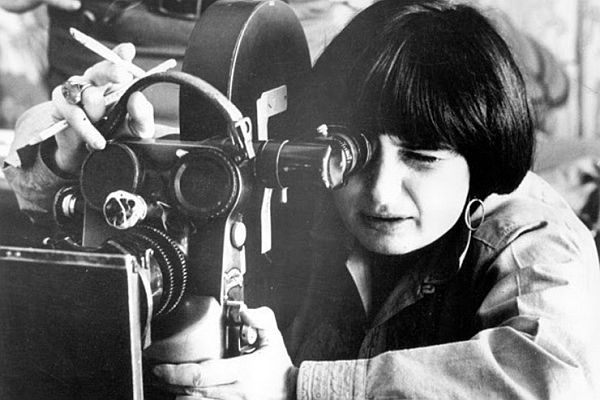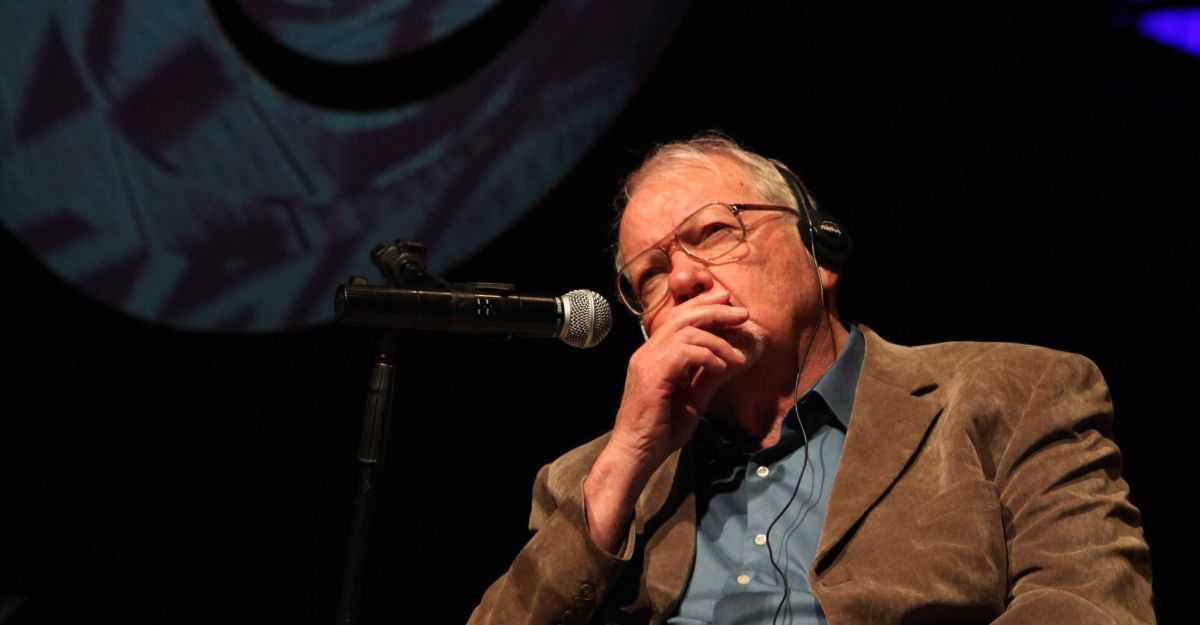‘I live in cinema. I feel I’ve lived here forever.’ Spoken at the end of her self-portrait essay film The Beaches of Agnès (2008), which sees her walled inside a shack made from film strips, this is one of Agnès Varda’s most hopeful descriptions – both a literal statement and a delightful metaphor. Varda, who died last week at the age of ninety after playing an essential role in the film industry for over six decades, was an installation artist, a filmmaker, a documentarian, a photographer and – most importantly, perhaps – a dreamer.
Amongst so many other accomplishments, including becoming the first woman to receive an Honorary Academy Award for her contributions to cinema, Varda sparked the French New Wave in 1954 with her debut film La Pointe Courte. That accolade is commonly given to Jean-Luc Godard for Breathless (1960), perhaps because the patriarchy often defines itself by the achievements of men. Indeed, I was taught about Godard and François Truffaut before I ever heard about Varda. But Varda’s place in history needs to be recognised, and I feel lucky that I came to her relatively early in my adult life.
Both Godard and Truffaut, among many others, publicly admired Varda’s work before their own features were recognised, and it’s easy to imagine the impact it would have had. La Pointe Courte, which Varda made without any formal training, is a simple tale of two lovers in a fishing village told with a sophisticated modernist structure, and is remarkable for the way it observes a simple, intimate rhythm of the townspeople within their physical spaces. In this film is the grain of Varda’s social commentary, her capacity to bring attention to people, places, voices and lives that are not traditionally recognised.
This was to become a constant of Varda’s film work and her other artistic practices. In Daguerréotypes (1976), she interacts with shopkeepers and tradespeople on her Parisian street, the Rue Daguerre. Decades later, she relished the availability of smaller, handheld digital cameras with which to capture more of the world around her in films like The Gleaners and I (2000). Faces Places (2017, co-directed with JR) continues on this path, as Varda finds subjects among people not always visible, in the margins. The first subject in Faces Places, for instance, is a woman living amongst a row of empty miner’s cottages set for demolition in France’s northern region. Varda and JR paste an enlarged photo of her face on the brick frontage of her house, and dub her ‘Jeanine, the resistant.’ When Jeanine sees the art, the visibility moves her to tears. Such moments in these films reflect Varda’s attention to space around her, her desire to explore the world through its histories and artefacts. Chance encounters enrich Varda’s work. This is not to say there’s no sense of discipline there, only that her world can surprise you. As Richard Neupert writes in A History of the French New Wave Cinema, ‘Everything is possible in Varda’s very personal cinematic style.’
Following La Pointe Courte, Varda’s short film Diary of a Pregnant Woman (1958), and her next two features, the groundbreaking Cléo from 5 to 7 (1962) and Le Bonheur (1965), are striking in their confrontation of sexual politics, distinctly feminist in the space that they give to nuances. Varda later made One Sings, The Other Doesn’t (1977), which focuses on two friends during the liberation movement and makes a strong case for women’s choices and the legalisation of abortion.
Varda was always unafraid to actively defend her rights for equality as a feminist even beyond the realms of art. After publicly signing the Manifesto of the 343, declaring that she had had an illegal abortion (Varda had a daughter, Rosalie, and would soon give birth to a son, Mathieu), Varda made Women Reply (1975), a sombre short film marked by compassion and anger. At Cannes in 2018, she was one of eighty-two women protesting on the red carpet against discrimination in the industry. The following month, I saw her speak at the BFI in London where she reflected on her career as a filmmaker. Here shew said: ‘I wanted to invent cinema, and be proud to be a woman.’
Born Arlette Varda on May 30, 1928, in Belgium, Varda legally changed her name to Agnès at the age of eighteen. After working as a photographer in Cuba and China and having established a career back in France, Varda immersed herself into Los Angeles in the late 1960s, and again in the early 1980s, documenting the strange happenings that she observed in the sun-filled, star-struck, socially fractured city through a collection of films. She was fascinated by the potential revelations in cinécriture, a term that unifies cinema and writing, designated this art form as a collaborative medium. The most significant of the films of this period may be Lions Love (1969),1 a warm, semi-fictional musing on artistic openness that embodies some of the pain and anger of a generation being forced into an unnecessary war. Her husband, Jacques Demy, was making Model Shop for Columbia Pictures at the same time, and his film shared similar concerns. While Varda and Demy made their own films, they were both involved in the other’s career, and their partnership enriched their work. Following Demy’s death in 1990, their shared love and mutual admiration infuses Varda’s work, both implicitly and directly.
In Varda’s consistent output, in her ongoing engagement with art and ideas, one finds a humble curiosity that I don’t see in any other filmmaker’s work. She never made a film that she presented as the sole answer to a question, nor the final word on a subject, and was always open to discoveries along with her audience. On multiple occasions, she returned to her own work, and even to Demy’s, for instance in The Young Girls Turns 25 (1993). In 2002, she made The Gleaners and I: Two Years Later, revisiting some of the people she encountered in the first documentary, and connecting with some new gleaners in France. One of my favourite examples is her short film Ulysse (1982), for which she contacted the subjects of a photograph she had taken in 1954, mining their memories of the day. After turning this event into an artwork twice, Varda invited further participation: at the Liverpool Biennial last year, I saw the film and the original photograph projected side by side, projected on a loop in a small gallery space. These projects demonstrate her wealth of admiration for the world and its possibilities, as well her fierce belief in people.
I didn’t know how to begin this piece of writing, and I don’t really know how to end it. I’m devastated about Agnès Varda’s death, not only because the world has lost a great light but because she was still making art, and we’ve lost what she still had left to give us. I will miss her warmth, her whimsical, invigorating Instagram updates. I’ll miss seeing photos of her (or her cardboard stand-in) frolicking around the world. Yet this isn’t an end, because the spirit of her work won’t fade. I’ll always be watching Varda’s cinema, thinking about Varda’s ideas, feeling her energy throughout my days. In her final years, she talked of death often, and in her last published interview about her final documentary, Varda by Agnès, she reflected on mortality once again. ‘I will be dying soon,’ she said in February. ‘I don’t want to speak about my work. I feel that I should spend two hours to look at a tree or to look at a cat, instead of speaking.’
We have her work now, and we have the memories. Agnès Varda still lives, in cinema.
1 Varda was interviewed on an American talk show with Susan Sontag who had made her first film, Duet for Cannibals. The footage is online and is well worth watching.






